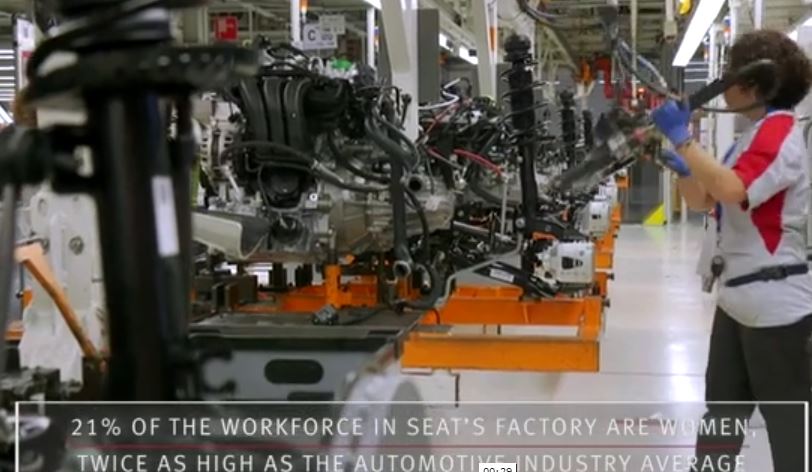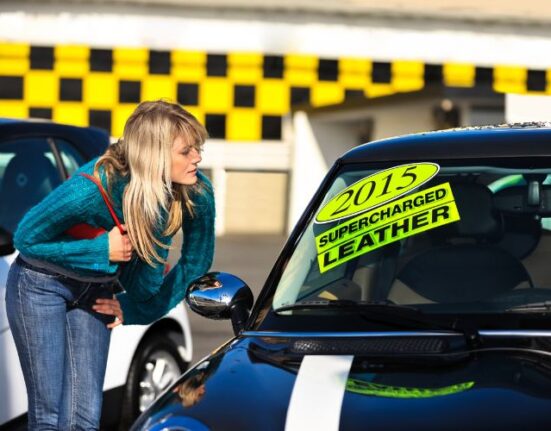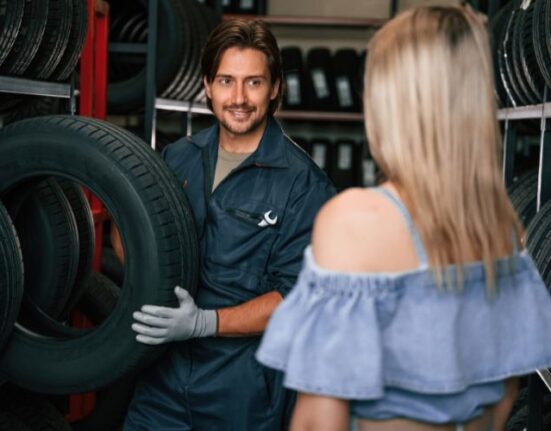- Aurea López was one of the first women to work on the SEAT assembly line nearly 50 years ago
- She joined the company at a time of massive recruitment of women in Zona Franca in the late 60s
- Women currently make up 21% of the workforce at the Martorell plant, twice as much as the automotive industry average in Spain
Martorell, 08/03/2017.– Aurea López, one of the first women to work on the SEAT assembly line, returns to Martorell nearly 50 years after she was hired. That was back in 1969, at a time of massive recruitment of women, around 600, in the Zona Franca factory. Aurea is visiting today’s factory in the company of 26 year old Sara Gil, who has been working in the assembly workshop for eight years. Women currently make up 21% of the workshop employees, a figure which is twice as high as the Spanish average in the automotive industry.
‘Women needed in the SEAT upholstery workshop’ was the ad she answered. 20-year-old Aurea López, who hailed from Lugo in northern Spain, did not hesitate to apply for one of the few jobs that a woman could perform in those years at the carmaker. “I found myself in a factory full of men”, she muses. A few years later she graduated from the sewing machine to work on the assembly line. “I had to teach the men how to sew”, she recalls.
As it happens, both Aurea and Sara joined SEAT when they were 20, but each found themselves in a very different context. Nearly half a century of difference traces a historical evolution that reflects the changing presence of women over the years.
– In 1951, the first woman: The very first woman was hired at SEAT in 1951, two years before production began. In the beginning, as Aurea points out, women only had jobs in upholstery, wiring and administration. When she started working, her job was to make the rugs for the SEAT 1500.
– First massive female recruitment: Aurea was hired in the late 60s along with about 600 women at the Zona Franca factory when the production figure reached a million cars and the SEAT 850 and 124 models were launched. Thanks to her effort and dedication, Aurea worked her way up and when she was 24 she was already responsible for a group of workers. Over the years, she was one of the first women to hold a position of responsibility on the assembly line.
– Young women: When Aurea was hired, the first women on the workforce were under the age of 25, and the trend continues today as in the case of Sara.
– 1,300 women at the time of the Leon: There was another large influx in the late 90s when 1,300 women were hired at the time of the launch of the SEAT Leon. In fact, 1998 was the year when the most women were hired, around 600 in a single year.
– SEAT, the carmaker with the most women: Today more than 1,700 women work on the SEAT assembly lines, which represents 21% of the workforce, twice as high as in the rest of the car industry in Spain. Unlike when Aurea worked at SEAT, Sara finds it perfectly normal that there are women in the workshops. “Women and men can do exactly the same work. For me it makes absolutely no difference which of my colleagues can perform the job”, she assures.

















